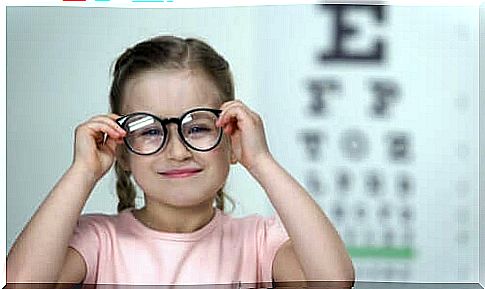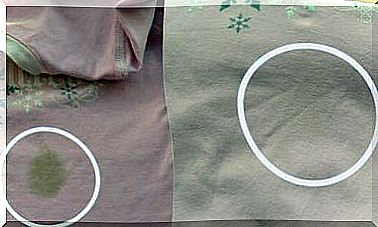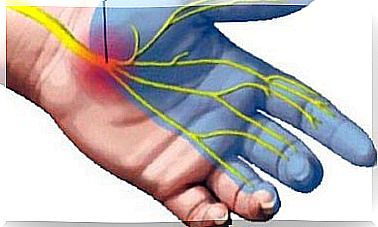Astigmatism In Children: How Can You Recognize It?
Astigmatism can lead to reading difficulties in children and therefore impair academic performance, as this visual disorder leads to blurred vision. Find out more about this topic today.

An astigmatism is a very common refractive error of the eye. It affects around 15 percent of the population, with most cases being diagnosed in childhood or adolescence.
Hereditary factors play an important role in this visual disorder. In addition, those affected often suffer from other types of ametropia, such as nearsightedness (myopia), which may have a family history.
If astigmatism in children is not detected in time, academic performance can suffer. That’s why in today’s article we explain to you how to recognize astigmatism and what you should know about it.
Astigmatism in children
Astigmatism is a deformation of the cornea. It is therefore a matter of a refractive error in the optical apparatus. The light cannot therefore be refracted evenly and is imaged in the shape of a rod on the retina. For this reason, one sometimes hears the term “astuteness”. The result is a blurred view.

Causes of astigmatism in children
We mentioned earlier that genetic factors play an important role. So, in many cases, the astigmatism is passed on from one parent (or both). But there are also other possible causes for which no family history can be observed.
The affected child’s cornea is slightly flatter in one direction and slightly more curved in the other than normal. Due to the irregular shape, the incident light is shown distorted on the retina and not concentrated in one focal point. This results in a blurred view.
Types of astigmatism
Different forms of astigmatism can occur in children, depending, among other things, on whether or not there are other refractive disorders. To understand this, one has to know what eye meridians are. If we look at the eye from the front, one imaginary meridian divides the eyeball from bottom to top and another from left to right.
In this way, the myopic corneal curvature can first be recognized. In this case, one meridian of the eye, or both, will focus like a nearsighted eye. On the other hand, astigmatism can also be associated with farsightedness (hypermetropia). In this case, the eye is unable to focus properly on nearby objects. In a mixed form, both visual disturbances are present.
What are the signs of astigmatism in children?
To detect astigmatism in children, symptoms must be carefully monitored. This is a little more complex than myopia or farsightedness, which have obvious signs that affect academic performance.
The most common symptoms of astigmatism include school problems. The child may be inattentive, maybe even hyperactive. But the lack of concentration is due to the fact that he cannot focus properly on the letters in school books or on the blackboard.
Frequent headaches, especially around the eyes and forehead, can also indicate astigmatism. In addition, affected children often tilt their heads to see better. They often have red eyes or itchy eyes from the excessive effort they make to see.
A lack of interest in reading can also be traced back to the visual impairment. When affected children read aloud, they often leave out entire lines of text or change the syllables.

How is the diagnosis made?
To diagnose astigmatism in children, it is important to observe symptoms and get an ophthalmological exam. The ophthalmologist uses a variety of methods and tests to confirm the suspicion.
Using various glasses, he assesses the child’s ability to see. If there is indeed astigmatism, he usually prescribes glasses or contact lenses for the child. The doctor decides what is better in each individual case.
Finally, we would like to briefly mention once again that astigmatism has an impact on the child’s performance and can also cause headaches, for example. Therefore, early diagnosis is very important. Parents and educators must be attentive in order to be able to help the child as quickly as possible.









